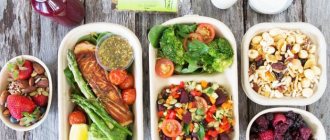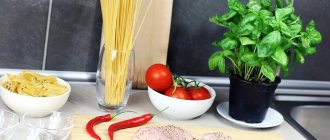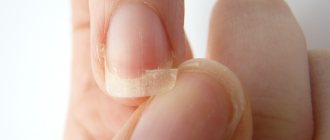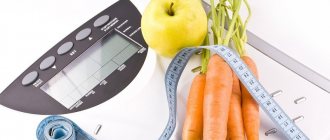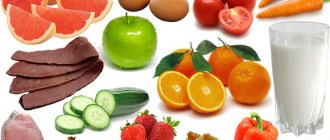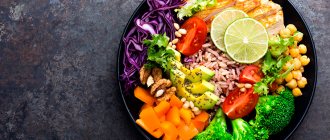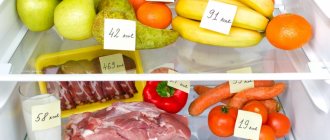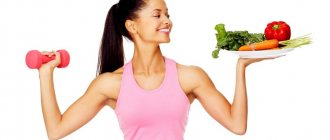2000 kcal diet. per day is relatively easy to tolerate due to the slight restriction of calories, you don’t have to starve. It is quite balanced and includes a large assortment of affordable and simple food products: fruits, vegetables, and for winter - pickles and juices. The diet can be followed throughout your life.
- We recommend reading: diet for 1900 and 2500 calories per day
CALCULATORS FOR THOSE WHO WANT TO LOSE WEIGHT
The essence and principles of the 2000 calorie per day diet
For normal functioning, the human body needs energy, which comes from food.
Dietary restrictions lead to a calorie deficit, as a result of which fat burning processes are activated. The 2000 kcal diet is designed to maintain good physical shape or slowly, gradually get rid of extra pounds.
Since such a nutrition plan includes replacing harmful foods with healthy ones, it has a positive effect not only on weight indicators, but also on the functioning of the digestive system, heart, blood vessels, and endocrine glands.
Is it possible to lose weight with this diet?
For normal functioning of the body, an average of 2000 kcal per day is required. But energy needs depend on many factors, including physical activity level, age, height, weight, and gender. For a man, 2000 kcal is too little, so such a diet will lead to weight loss.
For a woman, consuming this amount of calories can lead to weight gain.
ADDITIONAL INFORMATION ON THIS TOPIC
Manufacturers of sports nutrition The list of the best manufacturers of sports nutrition today is not so long. It is very difficult to gain consumer trust, because, as you know, reputation takes years to develop. Effective diets for weight loss The essence of any diet for weight loss is low calorie content. Remember, the weight will start to go away only when you start burning more calories than you consume. But in order to correctly create an individual diet that will help reduce the number of calories consumed, it is necessary to take into account a number of factors. Diet for women after 40 In this article, we decided to pay attention to the age factor, which should be taken into account both when creating a set of physical exercises and in creating a diet. Glucometers - which is better Today, in any pharmacy you can find a large assortment of glucometers, but choosing the most accurate and reliable one is very difficult. Healthy Foods Some foods have natural properties that can help prevent the development of various diseases, which is a good addition to traditional methods of treatment.
Rules for creating a diet
When switching to a new diet plan, it is recommended to follow simple rules:
- The daily amount of food should be divided into 3 main meals and 2-3 snacks. This will help relieve stress on the digestive organs.
- Before breakfast, it is recommended to drink a glass of warm water (you can add a little lemon juice and honey).
- Physical activity will help improve your body. It doesn't have to be going to the gym. Long walks in the fresh air, yoga, and dancing are suitable.
- You should drink at least 2 liters of water per day.
When switching to a new diet plan, you need to drink a lot of water.
Authorized Products
The basis of the menu should be:
- cereals and grain products;
- vegetables (cabbage, zucchini, tomatoes, cucumbers, broccoli, leafy crops, pumpkin, potatoes in small quantities);
- fruits;
- lean meats (poultry fillet, beef, rabbit, veal, lamb);
- dairy products (milk, kefir, fermented baked milk, cottage cheese, yogurt, natural yogurt);
- low-fat seafood and fish;
- eggs;
- nuts and seeds (pine, almonds, hazelnuts, sunflower and pumpkin);
- legumes (in small quantities);
- vegetable oils.
Prohibited Products
It is necessary to minimize or completely eliminate from the diet such foods as:
- sugar, sweets, chocolate, marmalade, marshmallows;
- baked goods made from white flour;
- fast food (hot dogs, French fries, greasy spicy pizza);
- fried foods;
- fatty meats and seafood;
- sausages and sausages;
- canned food;
- semi-finished products;
- carbonated drinks, alcohol and energy drinks.
You need to minimize your sugar intake.
These products contain almost no useful substances, but they saturate the body with simple sugars and harmful lipids, which contribute to the development of obesity and health problems.
Calorie calculator
Before selecting the calorie content of the diet, it is worth calculating the body’s energy needs using the formula:
- for men: (10*weight in kg) + (6.25*height in cm) - (5*age in years) + 5;
- for women: (10* weight in kg) + (6.25*height in cm) - (5*age) - 161.
The formula will give you the number of calories your body burns at rest.
If you work physically or exercise regularly, the body's energy needs increase.
When composing your diet, you need to monitor not only the energy value of foods, but also the balance of nutrients. The daily amount of food should consist of 30% proteins, 40-45% carbohydrates and 25-30% healthy lipids.
Foods to Eat on a 2000 Calorie Diet
It is necessary to consume a variety of healthy foods while following a 2000 calorie diet. List of recommended food products:
- Vegetables
: Include dark green leafy vegetables, starchy vegetables such as sweet potatoes and pumpkin, and a variety of colorful vegetables such as red peppers, eggplant, carrots, squash, green beans and tomatoes. - Fruits
: You need to focus on consuming whole fruits rather than juice. Fruits may include berries, apples, pears and citrus fruits. - Protein foods
: include lean meats and poultry, fish and seafood, nuts and seeds, lentils and legumes, and soy protein. - Whole Grains
: It is necessary to consume whole grains rather than unrefined grains. Whole grain foods may include whole grain bread and pasta, brown rice, quinoa, oats, barley and buckwheat. - Dairy
: You should choose low-fat options for milk, yogurt and cheese. - Plant milk
: Vegans can choose plant milk such as soy, almond or oat milk. - Healthy fats and oils
: Some examples of healthy fats include avocados, olives, olive oil, and fatty fish.
Necessary actions before starting the diet
You can make the transition to a new power system easier by following the recommendations:
- Buy a kitchen scale. To calculate calories, it is important to check the weight of the foods you eat.
- Keep a food diary and write down all the meals you eat.
- Weigh yourself, measure your volume, take a photo of your body. This will make it possible to monitor changes.
- For 2-3 weeks, try not to eat out or always take snacks/lunch with you in a plastic container. During a party or dinner at a restaurant, it is difficult to monitor the calorie content and quality of food.
- Make a menu for the week and eat according to your schedule.
To make the transition to a new food system easier, buy scales.
The essence of the diet
The weight will not decrease significantly from two kilograms in a week, but you will be vigorous and healthy. There will be no stress that provokes overeating. The effect will be better if you play sports. You can create a sample diet menu yourself, do not forget that you need to eat every two to three hours.
For people leading a sedentary lifestyle, 2000 calories a day is a lot, they will not lose weight. It is recommended to reduce the calorie content of food to 1300 kcal. women and 1500 kcal. men.
When your weight has stabilized, decide whether you want to lose weight further. If yes, then calculate the new calorie content of the daily menu. For example, you need to lose weight by another five percent, then reduce your calorie intake by the same amount.
Sample menu for 1 day for 2000 kilocalories
You can create a daily menu yourself, guided by your own capabilities and culinary preferences. It might look like this.
Breakfast (468 kcal)
In the morning you can eat:
- oatmeal (dry weight - 50 g), prepared with milk (fat content - no more than 2.5%);
- 1 boiled egg;
- 15-20 g of raisins (it is better to soak them in water for several hours before eating).
Oatmeal is one of the healthiest cereals for the body.
First snack (296 kcal)
Lunch may consist of:
- 1 whole grain toast with 50 g boiled chicken fillet;
- 1 medium tomato;
- 30 g hard cheese;
- 1 orange.
Lunch (523 kcal)
Lunch is the main meal. In the menu you can include:
- 450 ml vegetable soup (potatoes, tomatoes, onions, carrots);
- brown rice cooked in water (dry grain weight - 50 g);
- 100 baked meat.
Vegetable soup has a positive effect on metabolic processes.
Second snack (252 kcal)
An afternoon snack may consist of:
- 150-200 g of cottage cheese (fat content no more than 5%);
- 100 g fresh raspberries or strawberries.
Dinner (317 kcal)
An evening meal might look like this:
- 200 g carp fillet baked in foil;
- 200 g of boiled potato salad, sauerkraut, beets and carrots.
Nighttime snack (144 kcal)
If you feel hungry after dinner, you can drink 1 tbsp. (250 ml) low-fat kefir or natural yogurt.
How we made the diet
The diet consists of 4 meals: breakfast, lunch, dinner and a snack somewhere in between.
We selected the most inexpensive products that fit our criteria , using the database and prices of the “Okay” hypermarket. The prices are approximately the same in Lenta, Auchan, and somewhere nearby Magnit, which almost everyone has close by. In any case, the spread will be small.
To begin with, we decided to stake out the most important thing - key protein dishes: that is, solve 2 most important questions - “what are we having for lunch?” and “what are we having for dinner?” Ideally, these should be diverse sources of protein: chicken breast and something from fish/seafood. Then we added side dishes to the main dishes - complex carbohydrates and vegetables.
Then we figured out how much more protein/carbohydrates we needed and made a choice in favor of a carbohydrate breakfast - based on oatmeal.
For a snack we added some more vegetables/fruits and a protein drink. For dinner we added a small dessert (which can be replaced with something else to suit your taste).
You can replace any of the ingredients yourself. This diet is just an example of how you can eat fully and healthy for just 150 rubles a day.
Sample menu for three days at 2000 kcal per day
The first day's diet might look like this:
- in the morning: 250 g of buckwheat with 50 g of grated hard cheese, salad of 1 grated carrot and sweet pepper, 250 ml of Greek yogurt;
- lunch: 150 g cottage cheese, 1 apple;
- daily meal: 400 ml cabbage soup, 2 steamed cutlets, 2 stewed potatoes with green peas;
- snack: 200 g fruit salad;
- evening: 200 g durum wheat pasta with minced beef, grilled vegetables (carrots, eggplant, peppers).
Buckwheat is a valuable cereal product that contains protein.
The next day you can eat:
- after waking up: 3 egg omelette with cottage cheese and spinach, 150 g of sauerkraut;
- snack: 1 tbsp. fermented baked milk, 1 pear;
- lunch: 200 g baked fish fillet, 200 g boiled rice with stewed vegetables;
- afternoon snack: 1 medium avocado;
- dinner: 150 g fried green beans, 200 g baked turkey fillet, 1 tomato.
The 3rd day menu could be like this:
- breakfast: 200 g oatmeal with 1 tsp. honey and 100 g of fresh berries, 2 hard-boiled eggs;
- lunch: ½ tbsp. yogurt, fruit salad;
- main meal: 200 g veal baked in foil, 2 boiled potatoes, Greek salad;
- snack: 1 tbsp. curdled milk, 1 banana;
- evening: 150 g of rice with stewed carrots, 250 g of minced chicken casserole, cauliflower and zucchini.
Nutrition rules for gaining weight
- The ideal number of meals is 5-6 per day. You can eat 3-4 times, but this will make it more difficult to consume the required amount of calories.
- If you do not have the opportunity to snack on nutritious food, replace these techniques with sports nutrition - protein (protein) and gainer (carbohydrates and proteins).
- Don’t be afraid to eat after 18:00 and an hour or two before bedtime, this is normal and absolutely safe from a health point of view. All that matters is how comfortable you feel if you eat too late.
- Do not forget to drink enough clean water - at least 35 ml per kg of your weight.
- The main sources of carbohydrates are cereals (rice, buckwheat, oatmeal, barley), durum wheat pasta, potatoes, and whole grain bread. Simple ones (sugars, fructose) should account for no more than 20% of the total daily carbohydrate intake.
- The main sources of protein are chicken, turkey, meat, fish (white and red), eggs, cottage cheese and other dairy products. Protein from cereals and legumes is deficient in amino acid composition.
- Sources of fats are vegetable oils, nuts, fatty fish (red).
- If you are not gaining weight, add 100 kcal weekly to your norm (calculation below) until you notice changes on the scale. The ideal growth rate is about 0.5 kg per week.
Sample menu for 5 days
When creating a diet, it is advisable to constantly change foods and not eat the same food every day, so that the body receives the maximum amount of different nutrients and vitamins.
Day 1
The menu could be like this:
- after sleep: 200 g of pancakes with raisins, 100 g of low-fat cottage cheese;
- snack: a handful of strawberries, 2 bananas;
- lunch: 250 ml of lean borscht, 200 g of cod stewed with carrots and onions, 200 g of brown rice, 300 g of fresh vegetable salad;
- afternoon snack: 3 apricots, 1 tbsp. fermented baked milk;
- for the evening: 400 g of stewed cabbage with mushrooms, 100 g of chicken liver.
Pancakes with raisins are a very tasty dish.
Day 2
Diet example:
- in the morning: 200 g buckwheat, 250 g grated carrots stewed with sour cream, ½ tbsp. yogurt, 50 g low-fat cheese;
- lunch: 2 apples, rye bread sandwich with cheese;
- in the afternoon: 250 ml cabbage soup, 450 stewed vegetables (zucchini, potatoes, green peas), 2 steam cutlets;
- snack: 1 peach, 1 tbsp. kefir;
- evening: 150 g macaroni and cheese, 250 g grilled vegetables, 250 g fruit salad.
Day 3
Daily diet:
- in the morning: 200 g of omelet with low-fat cheese, milk, spinach, 200 g of cabbage salad;
- snack: 300 g low-fat cottage cheese with fresh herbs;
- lunch: 250 g fish soup, 100 g baked chicken, 400 g stewed cauliflower, 1 kiwi;
- afternoon snack: 2 pears, 1 tbsp. curdled milk;
- in the evening: 200 g of eggplant stewed with mushrooms and tomatoes, 150 g of boiled beans, 200 g of cherry jelly.
Omelette with cheese is a valuable nutritious product.
Day 4
Menu example:
- in the morning: 200 g of oatmeal with a handful of dried fruits, a sandwich with cheese;
- second breakfast: 100 g plums, 200 ml yogurt;
- in the afternoon: a portion of lean pickle soup, 200 g of turkey baked with potatoes and prunes, 200 g of vegetable salad;
- snack: 300 g watermelon, 50 g cottage cheese;
- evening: 200 g grilled squid fillet, 200 g vegetables with rice.
Day 5
The diet could be like this:
- breakfast: 50 g of muesli, poured over 1 tbsp. milk, a handful of nuts;
- snack: ½ tbsp. yogurt, 200 g fruit salad;
- afternoon: 250 g of mushroom cream soup, 200 g of boiled potatoes, 300 g of trout baked with broccoli;
- afternoon snack: 200 g fresh berries, 1 tbsp. kefir;
- in the evening: 150 g of pasta, 200 g of boiled green beans, 100 g of cottage cheese with a handful of berries.
Cream of mushroom soup is low in calories.
Useful tips
- Determine how many kilograms you need to lose and move towards the goal, while keeping a diary of nutrition and workouts;
- Do not eat more than 3-4 ingredients at one meal - too complex composition of dishes makes digestion difficult;
- Use calorie and nutritional calculators;
- Eat at least 4-5 times a day: split meals promote better absorption of food and do not overload the gastrointestinal tract;
- To maintain a fractional diet, you can prepare food in advance and take it to work in containers;
- Drink clean water at the rate of 30 ml per kilogram of weight;
- Go to the store with a grocery list and don’t buy anything more than planned;
- Do not keep prohibited foods and drinks in the house;
- If you go to a cafe or to a celebration while on a diet, choose dishes from approved foods;
- Do not eat at night or before bed, and if you feel very hungry, drink a glass of water or herbal tea;
- Having lost about 5 kilograms, recalculate the caloric content of your diet, reducing it in proportion to your weight loss;
- Give preference to boiled, baked and steamed foods;
- Use the “cheat meal” technique: it allows you to replace one of your meals once a week with something tasty and forbidden (for example, a cake or a piece of cake);
- Maintain a sleep-wake schedule, go to bed and wake up at the same time, devoting at least 7-8 hours of sleep per day;
- Avoid alcohol, as alcohol stimulates the appetite;
Having decided to normalize their weight, people often face ridicule and disbelief. Limit communication with negative friends and colleagues and remember that your health depends on your desire and willpower.
This is not just an example of a nutritious diet, but also an experiment - is it possible to eat healthy in Russia on the minimum wage? Yes, you can.
At the end of this article there is a link to a Google document - a table of calculations for this diet. You can copy it and change the ingredients yourself or leave your comment in the file.
7-day diet plan for 2000 kcal with recipes for weight loss
The diet for a week can consist of different dishes.
Monday
The nutrition plan could be like this:
- morning: 200 g boiled sweet potato, steam omelette (2 eggs, 30 g spinach, 30 g champignons);
- lunch: apple, peanut butter sandwich;
- afternoon: tuna pita bread (1/4 avocado, 1 pita bread, 150 g canned tuna, 1 onion, 1 tbsp cream cheese);
- snack: fruit salad (100 g grapes, ½ orange, 50 g hard cheese);
- evening: 140 g baked salmon, 100 g brown rice, grilled vegetables (asparagus, eggplant).
Peanut butter is rich in protein and nutrients.
Tuesday
The menu might look like this:
- in the morning: banana toast (toast 2 slices of whole grain bread, spread with almond paste, top with chopped banana, sprinkle with cinnamon);
- second breakfast: protein smoothie (40 g protein powder, a handful of blueberries, 200 ml milk, hemp seeds);
- afternoon: tuna and avocado salad (70 g tomatoes, 100 g leafy vegetables, ½ avocado, 150 g tuna), burrito with boiled beans and brown rice;
- afternoon snack: 1 fresh carrot, cut into sticks, 2 tbsp. hummus;
- evening: 150 g baked chicken, 80 g rice, 200 g boiled broccoli.
Wednesday
Approximate diet:
- breakfast: yogurt parfait (200 g natural yogurt, 30 g muesli, 80 g strawberries and blueberries each);
- snack: 2 peaches;
- afternoon: tofu noodles (130 g rice noodles, 150 g tofu, 1 tbsp peanut butter);
- snack: protein bar;
- for the evening: fish taco (200 g baked cod, 3 corn tortillas, ½ avocado).
Fish taco - delicious Mexican flatbread.
Thursday
Meal plan for Thursday:
- breakfast: 3 egg omelet, 2 tomatoes, ham sandwich;
- lunch: toast with honey;
- in the afternoon: 250 ml of pea soup (without potatoes), 150 g of boiled potatoes, 200 g of lean fish;
- snack: sandwich with cheese;
- evening: 300 g vegetable salad, 150 g meatballs in tomato sauce.
Friday
Menu for the day:
- morning: protein toast (2 slices of rye bread, 1 fried egg, ½ avocado);
- snack: 1 tbsp. natural yoghurt, 100 g fresh strawberries;
- lunch: vegetable salad, baked chicken with quinoa (150 g chicken fillet, 90 g quinoa);
- afternoon snack: a handful of almonds, 20 g of dark chocolate;
- for the evening: chili (stew 120 g tomatoes, 100 g pumpkin pulp, ½ onion, 130 g beans, 70 g corn).
Vegetable salad should definitely be included in the daily menu.
Saturday
On this day you can eat:
- in the morning: 3 hard-boiled eggs, 50 g of nuts, 100 g of tomato and pepper salad;
- snack: 1 tbsp. yogurt, a handful of dried fruits;
- afternoon: 250 ml chicken broth with rice noodles, beef with vegetables (100 g meat, 2 tomatoes, 100 g beans);
- afternoon snack: 150 g cottage cheese, 50 g nuts, 1 tsp. honey;
- for the evening: 300 g of vegetable stew (100 g of chicken fillet, tomatoes, sweet peppers, eggplant).
Sunday
Sunday Meal Plan:
- after waking up: oatmeal (60 g oatmeal, 20 g dried cherries, 1 tbsp each of flax and hemp seeds;
- second breakfast: vegetables with sauce (2 fresh carrots, ½ bell pepper, 4 tbsp guacamole);
- afternoon: grilled vegetables with cheese (60 g sweet pepper, 50 g zucchini, 1 tortilla, 100 g mozzarella);
- snack: ½ banana, 180 g chia seed pudding;
- dinner: shrimp pasta (50 g pasta, 170 g shrimp, 80 g green peas, 2 tbsp pesto, grated parmesan.
Chia seed pudding is a storehouse of healthy amino acids.
Dish recipes
Strawberry soup
Strawberries - 50 grams, water - 300 milliliters, sugar - 25 g, potato starch - 4 g, cream - 50 g. Strawberries are peeled, washed, immersed in water on a sieve and allowed to drain well, sprinkled with sugar and six to eight hours candied. The prescribed amount is boiled with the remaining sugar, potato starch is added and allowed to boil again, candied strawberries and juice are added and cooled. Serve with whipped cream or cookies. Raspberry and cherry soup is also prepared.
Beetroot salad with horseradish
You will need half a kilogram of beets, half a glass of vinegar, two horseradish roots, a bay leaf, five and six peppercorns. Boil the beets, peel and cut into small pieces. Boil water with vinegar and add spices. Grate the horseradish. Place the beets in layers in a glass dish, sprinkle each layer with horseradish. Season with marinade. Place the salad in the refrigerator for one to two days.
Banana and beet salad
Two bananas, six hundred grams of red beets, four tablespoons of cream, large lettuce leaves. Cut the bananas into pieces, mix with cream until the consistency of puree. Peel and grate raw beets. Add beets to the puree and place on lettuce leaves.
Spicy cucumber salad
Cut three cucumbers into slices, one onion into thin rings, a quarter cup of white vinegar, half a teaspoon of salt, two tablespoons of sugar, a quarter cup of water, parsley or cilantro, finely chopped herbs to taste, one cayenne pepper. Add vinegar, water, salt, sugar to a bowl. When the sugar melts, pour the mixture into the chopped cucumbers, add onions and peppers. Stir, cool. Decorate with greens. Can be served separately or as a side dish with pork, chicken, beef.
Tomatoes and cucumbers with cheese
Four cucumbers and tomatoes, one sweet pepper, eighty grams of cheese, half an onion, green salad, five olives, four tablespoons of olive oil, a third of lemon. Cut the tomatoes into large pieces, cucumbers into circles, onions, peppers into rings. Crush the cheese and mix with olive oil. Place the mixture in a dish on lettuce leaves and season with sauce. Garnish with pitted olives, lemon rings or half rings and herbs.
Reviews and results
Alexey, 27 years old, Ryazan: “I used the diet to get rid of excess weight.
In 2 months I lost 5 kg. At the same time, the body contour has improved. I didn’t feel hungry at all, I always ate enough. It was difficult to give up fried meat and carbonated drinks, but during the diet I got used to PN nutrition, and the craving for unhealthy foods disappeared.” Marina, 32 years old, Yekaterinburg: “The 2000 kcal diet was needed to build muscle. I included protein foods in my diet and almost completely eliminated carbohydrates. The first few days were difficult, because... the abundance of proteins caused constipation and abdominal pain. Therefore, I started eating bran in the morning (about 2 tbsp). Digestion has improved. In 6 weeks, the body “dried out”, the muscles became more prominent.”
Foods to Avoid
It's best to avoid foods that provide little or no essential nutrients to your body—also called "empty calories." These tend to be foods that are high in calories and added sugars but low in nutrients (15).
Here's a list of foods to avoid or limit on any healthy diet, regardless of your calorie needs:
- Added Sugars : Agave, baked goods, ice cream, candy, etc. – Limit added sugars to 5-10% of total calories consumed (11)
- Fast food : French fries, hot dogs, pizza, chicken nuggets, etc.
- Processed and refined carbohydrates : baked goods, white bread, crackers, cookies, chips, sugary cereals, etc.
- Fried foods : fried potatoes, french fries, fried chicken, donuts, potato chips, pies, pasties, etc.
- Carbonated drinks and sweetened drinks : sports drinks, sugary juices, sodas, fruit punches, sweet tea and coffee, etc.
- Diet and low-fat foods : diet ice cream, diet snacks, diet packaged and frozen meals, and artificial sweeteners, etc.
While the majority of your diet should consist of whole, unprocessed foods, it's okay to indulge in less healthy foods from time to time.
However, regularly consuming foods on this list may not only harm your health, but also delay or prevent weight loss or even disrupt your efforts to maintain your goal weight.
Summary:
It's best to avoid or limit foods with minimal nutritional value, such as fried foods, refined carbohydrates, and sugary snacks and drinks.

